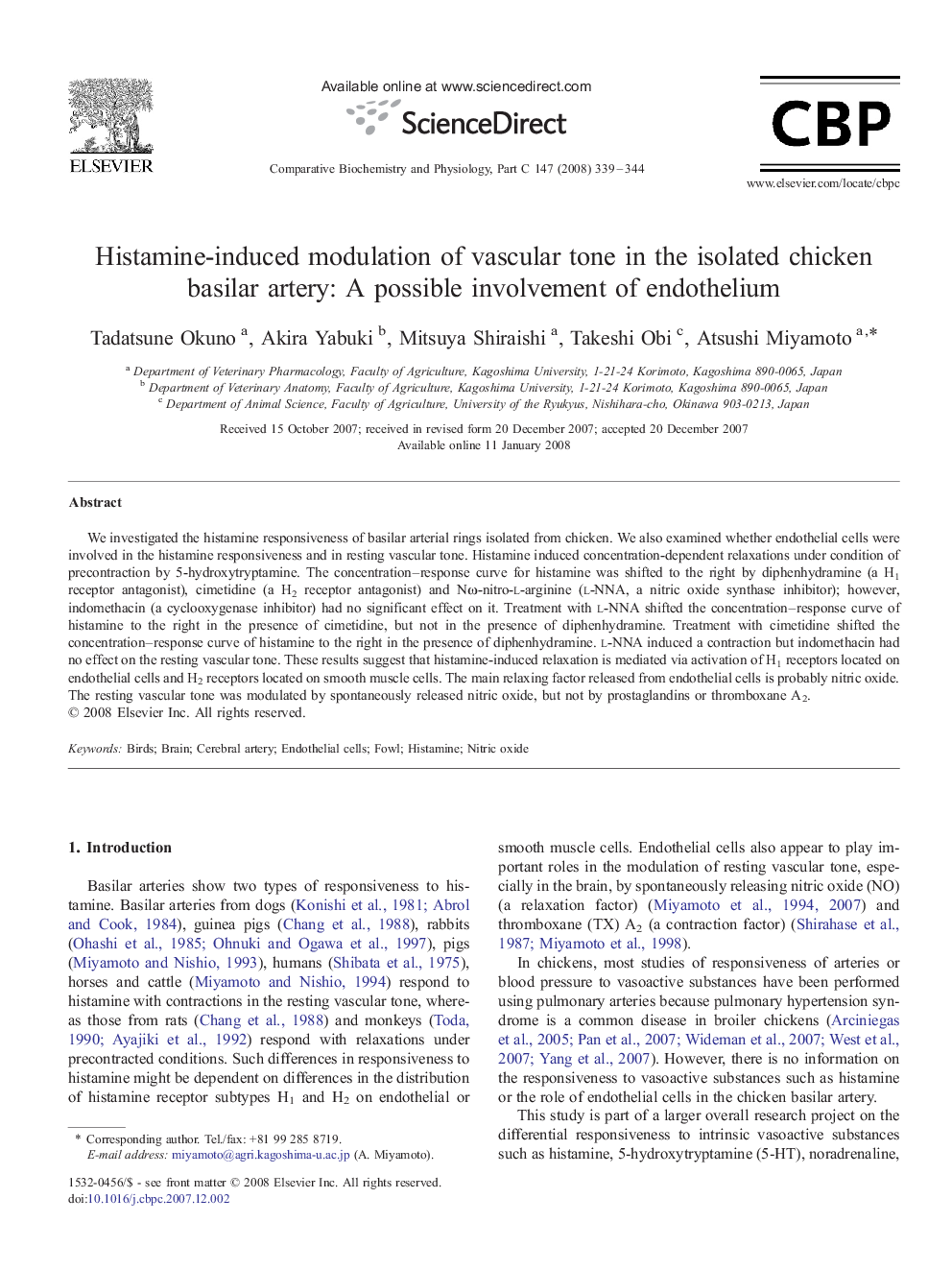| Article ID | Journal | Published Year | Pages | File Type |
|---|---|---|---|---|
| 1977681 | Comparative Biochemistry and Physiology Part C: Toxicology & Pharmacology | 2008 | 6 Pages |
We investigated the histamine responsiveness of basilar arterial rings isolated from chicken. We also examined whether endothelial cells were involved in the histamine responsiveness and in resting vascular tone. Histamine induced concentration-dependent relaxations under condition of precontraction by 5-hydroxytryptamine. The concentration–response curve for histamine was shifted to the right by diphenhydramine (a H1 receptor antagonist), cimetidine (a H2 receptor antagonist) and Nω-nitro-l-arginine (l-NNA, a nitric oxide synthase inhibitor); however, indomethacin (a cyclooxygenase inhibitor) had no significant effect on it. Treatment with l-NNA shifted the concentration–response curve of histamine to the right in the presence of cimetidine, but not in the presence of diphenhydramine. Treatment with cimetidine shifted the concentration–response curve of histamine to the right in the presence of diphenhydramine. l-NNA induced a contraction but indomethacin had no effect on the resting vascular tone. These results suggest that histamine-induced relaxation is mediated via activation of H1 receptors located on endothelial cells and H2 receptors located on smooth muscle cells. The main relaxing factor released from endothelial cells is probably nitric oxide. The resting vascular tone was modulated by spontaneously released nitric oxide, but not by prostaglandins or thromboxane A2.
